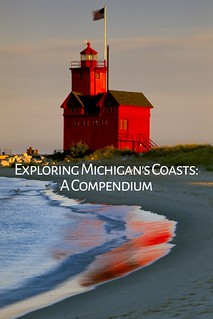Portrait of a Presidency: Patterns in My Life as President of The College of New Jersey
Publisher’s note: This is an excerpt from Chapter Five (Props for the House) of Portrait of a Presidency: Patterns in My Life as President of The College of New Jersey (Koehler Books: 2025), R. Barbara Gitenstein, President Emerita, The College of New Jersey, Senior Fellow and Senior Consultant, Association of Governing Boards.

Another example of successful behind-the-scenes communication in a political matter occurred in Chris Christie’s first year as governor. While boards of trustees in the state of New Jersey are autonomous and therefore responsible specifically for setting tuition and fees for the institution they serve, it was not unusual in the final budget passed by the legislature for there to be language added to the document that in effect established a tuition budget cap—“the allocation for each institution referenced herein is predicated on the tuition increase not exceeding [x] percent, or the allocation for that institution will be reduced by twice the percentage difference above [x] percent.” The legislature insisted it was not a cap, as the statute clearly empowers the individual institutional board with the establishment of institutional fees and tuition, not the legislature. But the mathematical impossibility of making up the difference between any increase above the percentage described and the reduced allocation, in effect, established a cap. While the legislature could not set tuition, it had the power to include such language in its budget proposal.
Up until Governor Christie, however, these caps were always in the discussions at the legislative level, never at the gubernatorial level. In 2010, Governor Christie included such language in his budget message. Many of my colleagues made public statements bemoaning the proposal and indicating the damage to the institutions. I instead wrote him a letter in which I explained my concerns. I had been particularly gratified by the governor’s support of the expansion, rather than the diminution, of institutional autonomy at a March meeting he held with higher education leadership. While I did not include in my letter one specific fear I had about the loss of such autonomy, I did share with many others that the cap could have a negative impact on bond ratings. I did not receive a written response from Christie. A month later, the chairman of the TCNJ Board, Susanne Svizeny, sent a similar letter.
As we feared, in spring of 2010, Standard and Poor announced the downgrading of the bond ratings of New Jersey public institutions of higher education, with one of the major rationales for that downgrade being the loss of institutional autonomy in setting tuition, thereby controlling revenue. A downgrading of a bond rating results in greater costs to borrow, limiting institutional ability to garner resources for facilities upgrades, a particular problem in New Jersey, since the state had a spotty record of providing resources to state institutions for facilities. In essence, the tuition cap resulted in greater costs for institutions.
In June of 2010, Steve Adubato (a well-known New Jersey political reporter) invited two guests to one of his televised shows—Chris Christie and me. I was looking forward to the opportunity to spar with Christie. He is a great debater. While I did not always agree with him on issues of policy, I found him a smart politician, someone who was not scared of other smart people and who respected integrity.
“One of the topics I have heard a lot about in recent conversations,” Adubato began, “is the proposed tuition cap for public institutions of higher education. Dr. Gitenstein, I suppose you have an opinion on that. Maybe you would want to share that with the governor?” Before I could open my mouth, Christie responded, “Oh, let me assure you, Dr. Gitenstein has already let me know what she thinks of my proposal.” He smiled, and I nodded, both knowing that we had dodged the possible embarrassing conversation that could have led to my criticizing the governor in public. I simply smiled in acknowledgement.
It is important to determine when working behind the scenes rather than making public statements is the most effective, when developing partnerships and alliances with other presidents, with other stakeholder groups, can result in better advocacy. Sometimes, however, no matter how righteous the cause, no matter how deep the commitment, such advocacy is unsuccessful.
My advocacy for a particular scholarship program consumed a lot of my attention in the early years of my presidency. New Jersey has been called the “cuckoo bird” state regarding high school graduates choosing to attend New Jersey institutions of higher education. In the early 2000s, the state was known for having the highest net outmigration of traditional-aged students in the country to attend out-of-state institutions. That is, a high percentage of New Jersey citizens sought higher education outside of the state, and few out-of-state citizens chose New Jersey for higher education. The numbers were particularly stark with the most academically talented. In the face of these statistics, in the fiscal year of 1998, a merit scholarship program, the Outstanding Scholar Recruitment Program (OSRP), was funded as a pilot project to reverse that trend.
The structure of the program was that 50 percent of the award was to be funded by the state appropriation, and 50 percent by the individual institution. Student SAT and high school rank determined eligibility. While students attending any public and private institution in the state could receive this support, the greatest number of OSRP students attended either Rutgers or TCNJ, because these institutions were seen as the most academically competitive of the publics in the state. In 2004, the New Jersey Higher Education Student Assistance Authority invested in a review of the program to assess its success (“The Outstanding Scholar Recruitment Program: An Evaluation: A Report by The Institute for Higher Education Policy,” Ron Phipps, Melissa Clinedinst, and Jamie Merisotis, October 2004). While the study was considered “deliberative, confidential, consultative, and advisory, and not for dissemination to the general public,” the major conclusions were shared with leadership of the institutions of higher education.
One of those recommendations was that OSRP should be continued and be memorialized in statute. Even in the face of this positive evaluation of OSRP and its recommendation to make the program permanent by placing it in statute, in 2006, the program was zeroed out in Governor Corzine’s budget proposal. Perhaps the program was an easy target of budget reductions, because the analysis indicated that while all institutions could benefit from the program, the real success of the program was at the public institutions, particularly at two of the twelve publics—Rutgers and TCNJ. Private institutions in New Jersey have more clout than in states with a more robust history of support for public higher education, and many of the publics felt that Rutgers and TCNJ already received an unfair portion of state dollars. If there was going to be advocacy for OSRP, it would have to be from Rutgers and TCNJ.
Support for OSRP had been cut in previous budgets, but it had never been recommended for closure. A recommendation for closure was particularly problematic because of the timing of the announcement. Many colleges, including TCNJ, offer admissions as early as the fall; part of that admission offer included a financial aid package, and part of that financial aid package would be the scholarship offer for an OSRP award. By the time Corzine announced his budget in spring of 2006, we had already made most of our offers to students who qualified for OSRP. Should Corzine’s plan to eliminate the program be memorialized in the budget passed in July, TCNJ had one of two unattractive choices—either take on the state’s portion of the obligation or inform students that we could not honor the full OSRP scholarship.
We had one opportunity for negotiating at least a delay in elimination. We could threaten the latter in public comments, hoping to influence legislative action. But we could not do it alone. We had to do so with our other larger, more resourced partner, Rutgers. Early conversations suggested that we would go into negotiations about retaining the program as a united front.
The competition between Rutgers and TCNJ for OSRP students was fierce. We did not attract the raw number that they did, but the percentage of OSRP students at TCNJ was much higher than at Rutgers. Rutgers likely saw an opportunity to become the institution of choice for all OSRP students. Despite the understanding that seemed to be shared in private, Rutgers began telling prospective students that they would honor the full scholarship, taking on the state’s burden. Clearly, TCNJ had to take the same action. The impact of the closure of OSRP ended up being most destructive to TCNJ because of our success in attracting these students.
According to the study of OSRP, in 2003 to 2004, 431 of the 1,441 students who met the OSRP standards statewide matriculated at TCNJ, which resulted in 39
percent of the entering class at TCNJ being OSRP-eligible, the highest in the state. TCNJ agreed to honor what would have been the state obligation for the cohort of students who entered as freshmen in fall of 2006, pending their maintaining academic eligibility, for their four years at The College. But it would be prohibitive to extend such a costly scholarship program to future cohorts. In other words, the last year of OSRP at TCNJ was for the cohort of students who entered in 2006.
The decision to cut the funding for OSRP was a great failure of vision by the state, which had tremendous negative impact on The College, both in terms of admissions and finances (as we substituted some institutional dollars for what should have been state dollars for the cohort of students who had been promised OSRP in their financial aid package). To this day, I wonder what other strategies could have been used to preserve the program. It was one of the times when I learned that collaborations with other institutions can be tenuous, and we cannot assume that our sense of shared interest will be the same as our putative partner. This was a case when it was each institution for itself.
R. Barbara Gitenstein, president emerita of The College of New Jersey, has over 40 years of experience as a college professor and administrator in both the public and private sectors. She was named president of The College of New Jersey after 6 ½ years at Drake University where she served as provost and executive vice president. She was the first woman to serve as provost at Drake and first woman to serve as president of The College of New Jersey.
Upon her arrival at TCNJ in 1999, Dr. Gitenstein immediately set about enhancing academic rigor and faculty-student engagement, which led to a transformation of the entire undergraduate program. This was accomplished in less than 3 years. The high number of students who graduate on time, for example, has led to TCNJ ‘s being ranked 5th in the nation among all public colleges and universities for having the highest four-year graduation rate.
Alumni giving nearly doubled during her tenure as president, the College’s endowment tripled, and TCNJ received its largest ever single gift: $5 million. Utilizing the public-private partnership provision contained in the New Jersey Economic Stimulus Act of 2009, Dr. Gitenstein completed a contract for Campus Town, the College’s first public-private partnership with a developer. Under Dr. Gitenstein’s leadership, the College has invested more than $380 million in its physical plant. Improvements include six academic buildings, housing for an additional 400 students, and the acquisition of 103 acres of property to add to the central campus of 289 acres.
Born in Florala, Alabama, Dr. Gitenstein received a BA with honors in English from Duke University and a PhD in English and American Literature from the University of North Carolina, Chapel Hill.
Find her online at https://rbarbaragitenstein.com/
-

- Log in to post comments



















